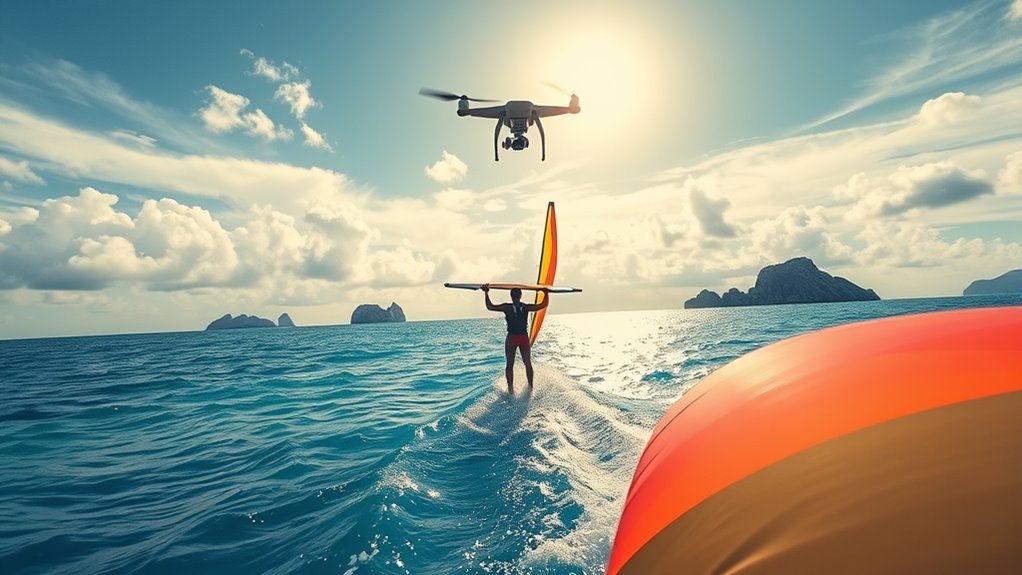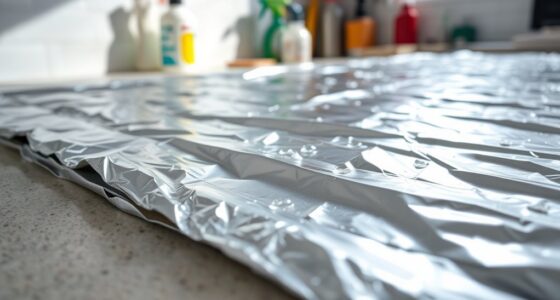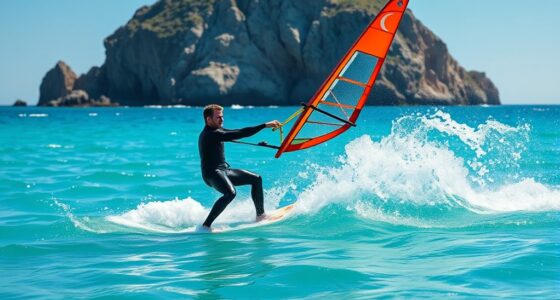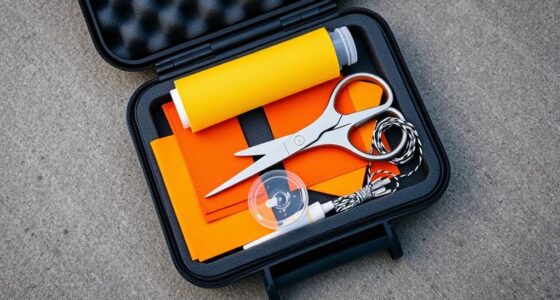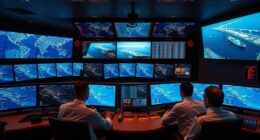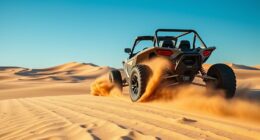To film your wingfoil session solo, set up waterproof cameras on stable mounts at front, side, and rear angles for variety. Use waterproof action cameras like GoPro with chest or head straps for first-person shots, and place static cameras on tripods or stable surfaces. Plan your shots in advance and switch angles during editing for dynamic footage. With careful gear placement and multiple perspectives, you can capture an epic session without a boat crew—keep going to discover more tips.
Key Takeaways
- Use waterproof action cameras mounted on stable points, like tripods or board mounts, for static shots without a crew.
- Position cameras at front, side, and rear angles to capture diverse views of your session.
- Utilize chest or head straps for first-person footage, adding immersive perspectives.
- Film during optimal lighting conditions, such as early morning or late afternoon, for better footage quality.
- Bring extra batteries and memory cards, and protect gear with waterproof cases for uninterrupted filming.

Capturing wingfoil sessions on film offers an exciting way to relive your adventures and share your progress with others. Without a boat crew, you’re responsible for setting up your own camera angles and choosing the right gear to get great footage. This might seem challenging at first, but with some planning, you can produce dynamic, engaging videos that showcase your skills and the beauty of your sessions.
Start by considering your camera angles. Since you won’t have someone to operate the camera for you, it’s best to set up static shots beforehand. Use a sturdy tripod or mount your camera on a waterproof housing attached to your board or a nearby stable point. Position the camera at different angles—front, side, and from behind—to capture a variety of perspectives. A front-facing shot highlights your movement and control, while a side angle emphasizes your balance and technique. A rear view provides insight into your stance and the interaction with the sail and foil. Experiment with these angles during practice runs to find the most compelling compositions. Remember, dynamic footage often involves switching angles or combining multiple shots in editing, so think ahead about how your footage will flow.
Set up static camera angles—front, side, rear—for dynamic wingfoil footage without a boat crew.
When it comes to gear selection, choosing the right equipment is essential. A waterproof action camera like a GoPro is an excellent choice because of its durability and wide-angle lens, which captures more of the scene. Invest in a quality mount—like a chest or head strap—to get a first-person perspective. For static shots, use a tripod with a waterproof housing or a stable mount that can be attached to your board or nearby fixed points on the shore or dock. Consider adding a floatation device to your camera to prevent losing it if it falls into the water. For more versatile shots, a gimbal stabilizer can help keep footage smooth, especially if you plan to move the camera around or follow your session from a drone or other moving platform. Additionally, utilizing camera stabilization technology can significantly improve your footage quality in dynamic conditions.
Battery life and storage are also important. Bring extra batteries and memory cards, as filming in high resolution and wide angles drains power quickly. Use a waterproof bag or case for your gear, especially if you’re switching between different setups during your session. Also, think about filming during ideal lighting conditions—early morning or late afternoon—when the light is softer and more flattering. By carefully selecting your camera angles and gear, you’re setting yourself up for success, capturing footage that truly reflects your wingfoil adventures without needing a boat crew.
Frequently Asked Questions
What Camera Settings Are Best for Filming Wingfoiling?
When filming your wingfoiling session, choose a camera angle that captures your movements clearly, like a low or side view. Adjust your camera settings based on lighting conditions—use a higher shutter speed and a wider aperture in bright sunlight for sharp images. In low light, increase ISO carefully to avoid grain. Keep your focus sharp and steady, and experiment with framing to get dynamic, engaging shots of your wingfoiling action.
How Can I Stabilize Footage Without Professional Equipment?
Perfectly prioritize your footage by practicing steady, smooth camera stabilization techniques. Use handheld techniques like bracing your arms, keeping your movements minimal, and adopting a wide stance. You can also stabilize footage post-filming with simple editing tools or apps. Focusing on fluid, focused shots guarantees dynamic footage that dazzles viewers, even without fancy gear. Master these methods to make your wingfoiling footage more marvelous, memorable, and mesmerizing.
What’s the Ideal Drone Height for Capturing Wingfoiling?
When considering drone flight height for capturing wingfoiling, aim for around 15-30 meters for a clear, dynamic shot. This height offers a good balance between capturing action and maintaining control. Use aerial filming tips like smooth, steady movements and adjusting altitude based on your proximity to the rider. Stay mindful of wind conditions and your drone’s battery life to *guarantee* safe, high-quality footage without needing a boat crew.
How Do I Prevent Water Damage to My Camera?
Water damage to your camera is like a silent enemy, threatening your footage’s clarity. To prevent this, invest in a waterproof housing and use protective filters that shield against splashes and saltwater. Always rinse your gear with fresh water after salt exposure and dry it thoroughly. These precautions keep your camera safe, ensuring your wingfoiling adventures are captured clearly without risking costly repairs.
Can I Film Wingfoiling Solo Without Additional Crew?
You can definitely film wingfoiling solo without extra crew. Use a waterproof camera or secure it with a stable mount, like a chest or helmet strap, to capture different wingfoil angles. Practice your positioning and movements so you can switch angles smoothly while riding. This way, you’ll get dynamic footage, and you won’t need anyone else to help. Solo filming becomes easier with the right gear and some planning.
Conclusion
Now that you know how to film your wingfoil session solo, you’re ready to capture each moment with confidence. No boat crew means more freedom, but it also means you’ll need to stay sharp and prepared. Think of it like flying solo—there’s a thrill in independence, but it requires focus and skill. Embrace the challenge, and you’ll create footage that’s as exhilarating as the ride itself. Your best session yet is just a click away.

